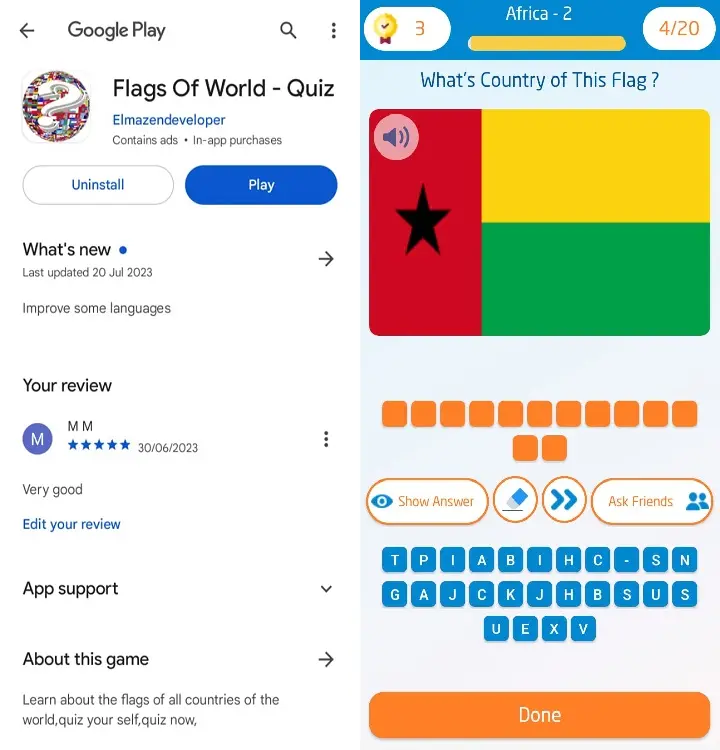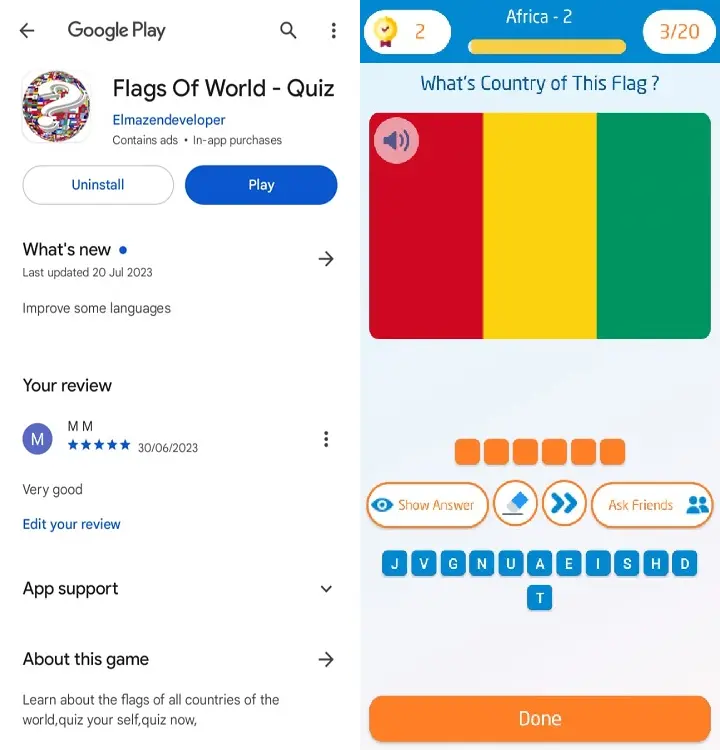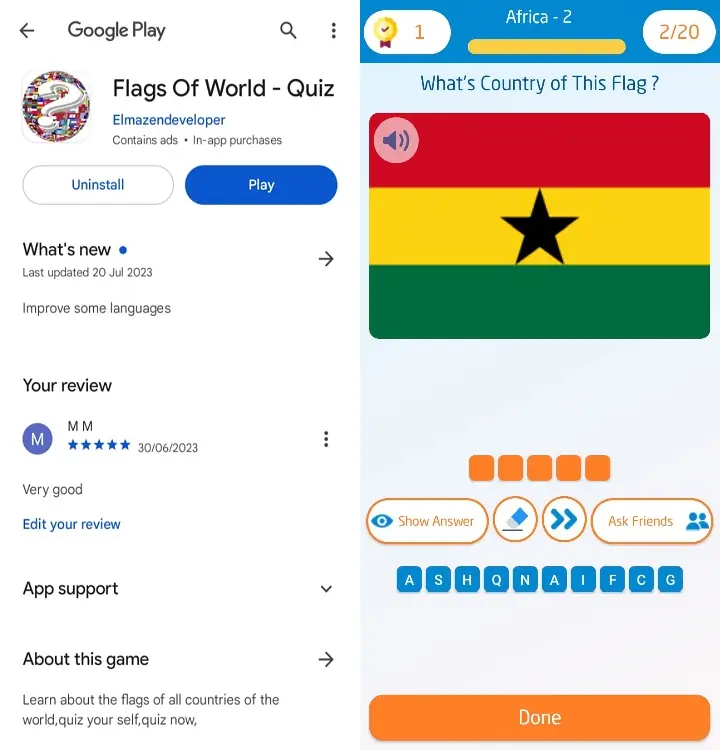Flag of Lesotho, Currency, Population, Tourist Places
Nestled within the embrace of South Africa, Lesotho is a country that boasts an array of natural wonders and cultural treasures.
Known as the Kingdom in the Sky, Lesotho’s high-altitude landscapes offer breathtaking views and a unique travel experience for those seeking adventure off the beaten path.
Tsehlanyane National Park is the crown jewel of Lesotho’s national parks.
Lesotho Flag, Currency, Population, Tourist Places

As we delve deeper into the heart of Lesotho, we find a country rich in history and culture.
Lesotho population stands at approximately 2.35 Million People as of January 2025.
Lesotho’s allure lies not only in its scenic beauty but also in the warmth of its people and the richness of its culture.
Whether you’re trekking through the highlands or exploring the local markets, you’ll find that Lesotho’s spirit is as enduring as the mountains that guard it.
Lesotho is a land of contrasts and enduring beauty, inviting travelers to explore its hidden valleys and towering peaks.
With each visit, you uncover a piece of its soul, making every journey an unforgettable chapter in the story of the Kingdom in the Sky.
Lesotho, officially the Kingdom of Lesotho, is a landlocked country entirely surrounded by South Africa.
It’s known for its mountainous topography and is the only sovereign state that is entirely above 1,000 meters in elevation.
The country’s highest peak is Thabana Ntlenyana, which stands at 3,482 meters.
Agriculture is a significant part of the economy, with many Basotho engaged in subsistence farming.
The country also generates income from water exports to South Africa and has a growing textile industry.
Lesotho Flag, Currency, Population, Tourist Places

Lesotho’s geography is characterized by highlands, with the Drakensberg and Maloti mountain ranges running north-south.
The climate is temperate, with hot summers and cold winters, often with snow in the highlands.
The Basotho people make up the majority of the population, and their culture is woven into the fabric of daily life.
Traditional music, dance, and crafts are celebrated, particularly the distinctive Basotho blanket and the mokorotlo, a conical hat that appears on the national flag.
Lesotho’s unique position and heritage make it a fascinating country with much to offer to both residents and visitors alike.
The mokorotlo is a traditional straw hat that is deeply embedded in the culture of Lesotho people.
Cultural Significance Traditionally, the mokorotlo was worn by males during important gatherings and ceremonies.
The mokorotlo’s design is believed to be inspired by the conical shape of Mount Qiloane, which is culturally significant to the Basotho people.
The hat has a wide brim and a pointed top, reflecting the mountain’s silhouette.
It’s also associated with a type of song known as mokorotlo, performed at certain events to reflect national identity and pride.
Over time, the hat’s design evolved to cater to women as well, becoming a unifying symbol of Basotho heritage.
Material and Manufacture The mokorotlo is crafted from an indigenous grass known as “mosea” or “leholi,” which is durable and suited to the hat’s construction.
Symbolism in Homes In Basotho homes, displaying a mokorotlo signifies upholding customs and acknowledging bonds with their ancestors, known as Balimo.
It’s also believed to protect the home against danger and evil influences.
Lesotho Flag, Currency, Population, Tourist Places

Kenya, a country of breathtaking landscapes, diverse wildlife, and vibrant cultures, is a jewel in the heart of East Africa.
From the sprawling savannahs to the majestic mountains and pristine beaches, Kenya offers an array of experiences for every traveler.
Kenya Flag, Currency, Population, Tourist Places

Maasai Mara National Reserve is renowned for the Great Wildebeest Migration and exceptional populations of lions, leopards, and cheetahs.
Amboseli National Park offers stunning views of Mount Kilimanjaro and large herds of elephants.
The Lamu Archipelago provides a serene coastal retreat with its beautiful islands and Swahili culture.
The Lamu Archipelago is a beautiful and historically rich group of islands located in the Indian Ocean, close to the northern coast of Kenya.
It’s part of the Lamu District and consists of several islands, with the largest being Pate Island, Manda Island, and Lamu Island.
Lamu Town, situated on Lamu Island, is the largest town in the archipelago and is recognized as a UNESCO World Heritage Site.
It’s renowned for its ancient architecture, reflective of the Swahili culture, and its historical significance as a trade hub.
The Lamu Archipelago is not just a place of natural beauty but also a testament to the cultural and historical depth of Kenya, making it a must-visit for anyone interested in exploring the country’s heritage.
Whether you’re looking to relax on pristine beaches, explore ancient ruins, or immerse yourself in the local culture, the Lamu Archipelago offers a unique and unforgettable experience.
Takwa is an intriguing historical site located on the southeastern corner of Manda Island in the Lamu Archipelago, Kenya.
It’s accessible via a 30-minute boat ride from Lamu Town.
The site is particularly known for its Great Mosque, which is relatively well-preserved and features a distinctive large pillar atop the qibla wall.
This pillar is believed to symbolize the burial of a Sheikh below the wall.
Takwa’s abandonment is attributed to the salination of its freshwater sources.
Today, Takwa is a national monument and is open to the public for visits, picnics, and even overnight camping.
Kenya’s population stands at approximately 57.04 Million People as of January 2025.
This diverse nation is home to over 40 different ethnic groups, each contributing to the rich tapestry of Kenyan society.
The Kenyan flag is a powerful symbol representing the people, their struggle for independence, and their rich natural resources.
The black color signifies the people of Kenya, red commemorates the bloodshed during the fight for independence, and green symbolizes the country’s landscape.
The white fimbriation added later stands for peace and honesty.
The currency of Kenya is the Kenyan Shilling (KES), which is divided into 100 cents.
The Kenyan shilling is a testament to the country’s growing economy and stability.
As of 21 January 2025, one US dollar is equivalent to about 129.5 Kenyan Shilling ( KES ).
Kenya is not just a destination; it’s an experience that stays with you long after you’ve left its shores.
Whether you’re witnessing the great wildebeest migration, soaking up the sun on Diani Beach, or exploring the vibrant streets of Nairobi, Kenya promises an adventure that is truly unforgettable.
Kenya Flag, Currency, Population, Tourist Places

Guinea-Bissau is a small country on the Atlantic coast of West Africa, bordered by Senegal and Guinea.
It also has a rich and diverse culture, history, and natural beauty that make it worth exploring.
In this article, we will introduce you to some of the tourist places of Guinea-Bissau, as well as some facts about its population, flag, and currency.
Guinea-Bissau Flag, Currency, Population, Tourist Places

Guinea-Bissau has a variety of attractions for travelers who are looking for adventure, wildlife, culture, and history.
Here are some of the best places to visit in Guinea-Bissau:
Now that you have learned about some of the tourist places of Guinea-Bissau, let us share with you some facts about the country that you may find interesting:
Guinea-Bissau Flag, Currency, Population, Tourist Places

Guinea Bissau is has to about 2.22 million people as of January 2025.
Guinea-Bissau is a country that has faced many challenges, but also has many charms.
It is a destination for travelers who are looking for something different, authentic, and adventurous.
If you are one of them, we hope that this article has given you some useful information and inspiration to plan your trip to Guinea-Bissau.
Have a great time!
Guinea-Bissau Flag, Currency, Population, Tourist Places

Guinea is a country in West Africa that borders the Atlantic Ocean and shares borders with six other countries: Guinea-Bissau, Senegal, Mali, Ivory Coast, Liberia, and Sierra Leone.
It has a diverse geography that includes coastal plains, mountains, plateaus, and forests.
Guinea is has to about 14.94 million people as of January 2025.
It also has a rich culture that reflects the influence of various ethnic groups, such as the Fula, Mandinka, Susu, Kissi, and Loma.
The majority of the population lives in rural areas and depends on agriculture for their livelihood.
The official language is French, but many local languages are also spoken.
Guinea Flag, Currency, Population, Tourist Places

The capital and largest city is Conakry, which is located on a peninsula in the Atlantic Ocean and serves as the economic and cultural center of the country.
Guinea’s national flag consists of three vertical stripes of red, yellow, and green.
The colors have symbolic meanings that reflect the country’s history and aspirations.
Guinea Flag, Currency, Population, Tourist Places

Guinea’s national currency is the Guinean franc (GNF), which is subdivided into 100 centimes.
As of 22 January 2025, one US dollar is equivalent to about 8644.82 Guinean franc ( GNF ).
The currency was introduced in 1959, after Guinea gained its independence from France and rejected the CFA franc, which was used by many former French colonies in Africa.
Guinea has many tourist attractions that showcase its natural and cultural beauty.
Some of the most popular places to visit are:
Guinea is a country that has a lot to offer to travelers who are interested in exploring its culture and nature.
It is a country that has overcome many challenges and strives for development and democracy.
It is a country that deserves more attention and appreciation from the world.
Guinea Flag, Currency, Population, Tourist Places

Ghana, a vibrant nation in West Africa, stands as a beacon of cultural diversity, economic resilience, and natural wonders.
The first sub-Saharan African country to gain independence in 1957, Ghana has long been a trailblazer in fostering democracy and development across the continent.
Flag of Ghana, Currency, Population, Tourist Places

Renowned for the warmth and hospitality of its people, Ghana welcomes visitors with open arms and an enriching array of experiences.
Whether you're seeking historical landmarks, breathtaking nature, or serene beaches, Ghana offers something for everyone.
Here’s an exploration of some must-visit destinations in this remarkable country:
This historic fortress, built by the Portuguese in the 15th century and later used by the British as a hub for the transatlantic slave trade, now serves as a poignant museum.
Today, the castle is a museum highlighting the painful history of the slave trade and its impact on Africa and the world.
Just a short distance away lies Elmina Castle, another iconic structure from the 15th century, steeped in the same historical significance.
This lush rainforest reserve is home to diverse endangered species and features a famous canopy walkway, offering breathtaking views of the treetops.
Visitors can also enjoy hiking, camping, and birdwatching in this ecologically rich park.
Ghana’s largest wildlife reserve, Mole National Park, provides an unforgettable safari experience.
Spot elephants, antelopes, buffaloes, lions, and leopards in their natural habitats, either on guided drives or nature walks.
Accra’s most popular beach is a hub for relaxation and recreation.
Visitors can swim, surf, or simply soak up the sun while enjoying vibrant local entertainment, restaurants, and cultural performances.
Located in Ghana’s Volta Region, Wli Waterfalls is the tallest in West Africa.
The falls are most spectacular during the rainy season, and adventurous hikers can explore the serene upper falls for a quieter experience.
Flag of Ghana, Currency, Population, Tourist Places

As the largest man-made lake in the world, Lake Volta is a marvel of engineering and natural beauty.
Created by the Akosombo Dam in the 1960s, it supports hydroelectric power, irrigation, and fishing.
Visitors can enjoy boat cruises, water sports, and explore the communities and islands along its shores.
To delve deeper into Ghana’s rich history, visit the Kwame Nkrumah Memorial Park in Accra, dedicated to the nation’s founding father and first president.
As of January 23, 2025, one US dollar equals approximately 15.21 Ghanaian cedis (GHS).
The cedi, introduced in 2007, is the fourth currency in Ghana's history and reflects the country’s economic progress.
Ghana’s flag, designed by artist Theodosia Okoh in 1957, is rich with symbolism.
Its horizontal stripes of red, yellow, and green, along with the central black star, represent the sacrifices for independence, the country’s mineral wealth, and its lush natural environment.
With a population of 34.78 million people as of January 2025, Ghana ranks as the 12th most populous nation in Africa and the 47th globally.
About 56.7% of its people reside in urban areas, with a population density of 150 people per square kilometer.
Ghana is a treasure trove of culture, history, and natural beauty.
From its ancient landmarks and diverse wildlife to its bustling cities and welcoming beaches, the nation offers countless opportunities for discovery and inspiration.
Proud of its heritage, confident in its present, and optimistic for its future, Ghana invites you to explore its wonders and experience its unmatched hospitality.
It's a journey you'll cherish and remember forever.
Flag of Ghana, Currency, Population, Tourist Places
